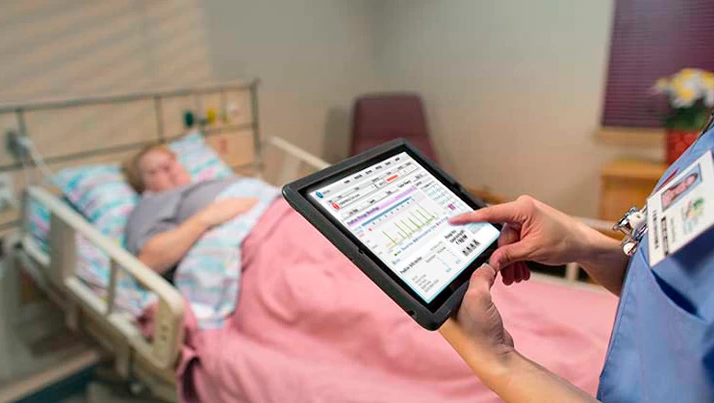
The Internet of Things has already become a staple name in every aspect of our lives since everything from smart fridges to networked DVRs are making ways into our homes. One of the most prominent areas for the technology is medical industry, where IoT has a number of integrations, appearing seemingly everywhere, from patient devices all the way to supply chain management for pharmaceuticals and medical equipment. IoT is trying to renovate the sector from the ground up, while some healthcare software development companies are clearly focusing on the industry and its perculiarities. Though it is still early to predict how much of an impact it will really make. Some of the devices that proved to be a benefit for patients care to include:
- Blood glucose monitoring for diabetes patients
- Smart pills, which can be used to monitor health problems
- “Smart beds” that detect when a patient is trying to change position or leave their bed
- Remote monitoring for patients who have left the hospital but still require care
- RFID-equipped pill bottles, which track when a patient takes their medication and sends reminders if a dose is missed
But one of the most visible and common integrations we can see for ourselves is, of course, a patient health data access, which has proven to be a generally accepted patient engagement strategy in order to empower patients through the care team integration and health literacy. Medical providers nowadays are acting on patient data access, by offering nearly 90% of their patients access through a digital health record or a patient portal. These patient portals are getting supplemented by the providers, through the expansive campaigns that are driving widespread patient activation as well as patient adoption.
We can see though, that not all of the industry professionals are supporting this broad patient health data access. Many have raised their concerns on the matter, speculating about the strain such access may put on their patient-provider relations, or that patients can be confused and scared by tons of medical related terminology. Yes, the patient portals are already used almost in every facility, but today we will try to look and examine some of the patient data access biggest advantages and disadvantages, and how we can further improve and benefit from the matter.
Spotting errors
Many value health data patient access as an important step towards patients’ personal safety. Patients that review their medical errors, can eventually act as a second eye, in order to ensure that all of their medical data is presented accurately. Like for instance, patients can their medication prescriptions for spotting a dosage error. With this example, clinicians still are in charge of prescribing the dosages, but that can help them to get more insight into a particular patient medical history. A 2015 study made by a pro-health-transparent company OpenNotes, showed the effectiveness and need for patients reviewing their own medical records. Researchers at OpenNotes have presented a patient-facing annotation tool to 41 clinicians, that were already using OpenNotes. The main success of the tool was the showcase of importance for patients to study their medical records, the main reasoning being safety, not education, as many initially had thought.
- Over 6,000 patients viewed their medical information between August 2014 and August 2015, and 8 percent of those patients used the feedback function.
- Of that 8 percent of patients, 23 percent flagged a potential medical record error.
- Sixty-four percent of feedback was marked as a confirmed or possible error, and 57 percent resulted in eventual medical record revisions.
Sigall Bell, MD, lead author of the tool said the following: “Our findings add to a growing literature suggesting that patients can help identify mistakes. We were struck that nearly all patients and care partners in the study found the feedback tool valuable. What that indicates to us is that patients are eager to help their health care teams ‘get it right.”
Raising concerns
Even those defending the health data patient access, often raise a more of interpersonal concern. Some fear that specific clinician notes, that are left in the patient records solely to share thoughts with the colleagues, as well as being more concrete and trying to predict possible outcomes, can seriously scare and confuse the patients. Chief Medical Information Officer CT Lin, MD, FACP said that was a significant concern at UC Health. He recalled some of his colleagues raising concerns like: “Do you want patients to call us with terminology questions? Will they be offended when we call them obese? Or if we say they’re smoking or they smelled like smoke? This is going to be terrible.”
A study that was published in the Journal of the American Medical Association (JAMA), where providers have shared similar sentiments about the matter. Steven Malkin, MD, for example, stated that his personal notes are only there for himself: “If I knew a patient was going to read them, I would write them differently.” This way we can see that for many providers it is a serious matter, that can sometimes lead to unpleasant results. Patients tend to report a strain on the patient-provider relationship due to the clinical note and data access. Therefore many healthcare organizations try to develop new strategies in order to help their patients deal with the stress that some of the medical data can give them.
Good examples here would be Mayo Clinic and MD Anderson Cancer Center, where providers withhold the lab results form their patients for a short period of time, to ensure that the clinician can properly review all the data before a patient can get his hands on it, as stated by the JAMA article. This way clinicians can adjust their comments, leaving the honesty in, but making it more understandable and accessible for a patient to understand.
In conclusion, I want to say that, yet it is still a debatable topic, patient health data access it quickly became sort of the imperative in the industry of healthcare. Many of the value-based care models, for example, rely on patients being active participants of their own care, and this, of course, cannot be achieved without them being able to access their own medical records.












